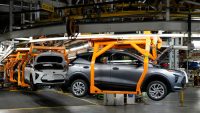ACTION on GAP insurance sales has failed to make the hoped-for impact, a report by the Financial Conduct Authority has shown.
In 2014, the regulator said it had found evidence of ‘consumer harm’ in the GAP insurance market, with an overpayment for add-on GAP insurance of around £76m to £121m a year out of an estimated market size of £152m, and an average claims ratio that was much lower than for other general insurance products.
The FCA said there were four factors:
• Vehicle sellers enjoying a strong point-of-sale competitive advantage, meaning there was little or no pressure on sellers to lower the price
• A lack of information, including about alternative providers, preventing consumers from being able to compare products
• Many consumers not knowing that they could buy GAP insurance separately (‘standalone’) elsewhere, often at a lower price
• Consumers’ focus on the main product – ie, the vehicle – leading to many buying add-on GAP insurance when they may not have wanted and/or needed it, with the add-on mechanism weakening consumers’ decision-making and engagement
It therefore intervened in September 2015, making it mandatory for vehicle sellers to provide sufficient information to consumers and bringing in a two-day cooling-off period during the sale process.
The authority said it believed that having more time and information would mean consumers could decide if they needed GAP insurance and could shop around.
As such, the FCA expected improved competition between add-on and standalone sellers, with standalone sales increasing relative to add-on sales, and better outcomes for the consumer, namely better-informed and more active decision-making during the purchasing process, including more consumers shopping around and buying GAP insurance from standalone providers, as well as an overall decrease in add-on GAP insurance sales, since it was concerned about consumers buying potentially unsuitable add-on products.
However, it has had to admit that although its intervention ‘has helped to reduce considerable harm in the market’, it was actually less than expected. A total of 41 firms and 1,000 consumers were involved in the study, and add-on sales were found to be 16 to 23 per cent lower when up to 32.5 per cent had been predicted, while the standalone market share had risen by just eight per cent from six per cent pre-intervention, although an increase of up to 40 per cent was expected.
Meanwhile, add-on prices were two to three per cent lower but a drop of up to 17 per cent had been predicted. In addition, the price differential with standalone had increased when it should have narrowed.
The FCA concluded that its intervention had had a greater impact on sales than on prices, while its survey of consumers ‘overstated the impact of the intervention on switching to the standalone market, and underestimated the number of consumers who would make a more considered purchase given the information and time to do so’.
Pictured at top is the entrance to the FCA’s offices in London
MORE: RAC Dealer Network to launch five-star Defaqto GAP insurance cover
MORE: Guest blog – The growth of GAP insurance
MORE: Financial watchdog launches probe into car loans provider


































